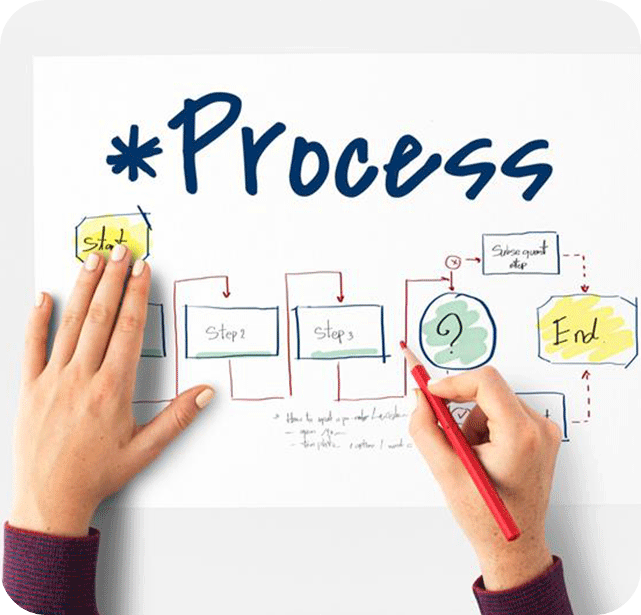AI & Automations
Opalina’s AI and automation solutions bring the power of machine learning, natural language processing, and RPA to streamline complex processes. Unlock efficiency, reduce manual work, and deliver smarter customer and employee experiences.

Key Features
AI-Driven Decision Making
Automates complex workflows with machine learning logic and insights.
Conversational Interfaces
Natural and personalized experiences through smart chat interfaces.
End-to-End Automation
Covers data capture, processing, routing, and decision-making.
System Integrations
Easily connects with ERP, CRM, HRMS, and third-party platforms.
Real-Time Analytics
Get instant visibility into workflow health and process efficiency.
Benefits of Choosing Us
We bring practical AI that scales with your business—grounded in use cases and optimized for real-world deployment across departments.
Benefits of Choosing Us
We bring practical AI that scales with your business—grounded in use cases and optimized for real-world deployment across departments.

Reimagine what your business can do with AI.
Services Offered

Chatbots & Agents
Use LLMs to generate human-like, context-aware responses to complex queries.
Power chatbots with RAG to pull real-time data from internal systems.
Deploy agentic bots that not only respond but also take action across systems.
Handle multi-turn conversations with intent-switching and dynamic dialogue planning.
Integrate bots across websites, mobile apps, Slack, and messaging platforms.
Escalate to humans with full conversation and context transfer when needed.
Conversational AI with deep contextual awareness and execution capabilities.
HR Automation
Automate JD creation, candidate screening, and interview scheduling using LLM-powered assistants.
-
Use RAG to personalize candidate experiences with role-specific FAQ generation.
-
Deploy agentic workflows to handle multi-step onboarding and background verification processes.
-
Enable self-service portals with AI-driven responses to HR queries.
-
Reduce hiring cycles and bias with structured ML and language-based evaluations.
-
Integrate seamlessly with your existing ATS, HRMS, and communication tools.
Modernize HR operations with AI, LLMs, and workflow intelligence.


OCR & Document Processing
-
Use LLMs to understand, summarize, and validate complex document content contextually.
Implement OCR pipelines enhanced by RAG to verify data against internal sources.
Automate invoice, KYC, and compliance processing with agentic task handling.
Identify document types, extract key fields, and trigger downstream workflows.
Reduce manual review by classifying, tagging, and interpreting scanned documents accurately.
Continually improve accuracy with active learning loops and model feedback.
Extract, interpret, and act on unstructured data with intelligent systems.
Workflow Orchestration
-
Coordinate multi-step workflows across teams and platforms.
Allocate resources intelligently based on current load patterns.
Trigger automated actions based on data or events.
Connect multiple systems (ERP, CRM, APIs) for smooth flow.
Monitor performance and bottlenecks via real-time dashboards.
Enable audit trails for compliance and transparency.
Smarter workflows with AI at the helm.


IT Support Assistant
-
Classify incoming tickets and assign them to the right teams.
Recommend solutions from historical ticket responses automatically.
Prioritize issues based on urgency, type, or SLA rules.
Reduce mean time to respond and resolve IT incidents.
- Train on internal knowledge base and real-time support data.
- Integrate with ITSM tools for streamlined ticket management.
AI-driven triage and response for IT queries.
Intelligent Process Automation
Streamline repetitive tasks across departments with intelligent bots.
Train AI models to adapt to workflow changes over time.
Automate data entry, validation, and system updates reliably.
Use rule-based logic with decision trees for process automation.
Integrate with existing CRMs, ERPs, and SaaS tools seamlessly.
Measure performance with dashboards and automation reports.
Combine AI with RPA to automate end-to-end business tasks.


IT Production Support
-
Continuously monitor logs and detect early signs of failure.
Trigger alerts with contextual evidence to support teams.
-
Automatically raise incidents in ITSM systems with root cause.
Document resolutions to enrich the internal knowledge base.
Identify recurring issues using AI-driven log analysis.
Reduce downtime through predictive issue resolution models.
Proactive support to reduce incidents and downtime.
Internal Knowledge Base
NLP-based search across policies, FAQs, and internal files.
-
Provide instant responses based on indexed internal documents.
-
Reduce time spent searching for onboarding or HR information.
-
Improve employee experience and self-reliance.
-
Continuously improve accuracy based on user feedback.
-
Secure access control to ensure data confidentiality.
Empower employees with AI-powered answers.

